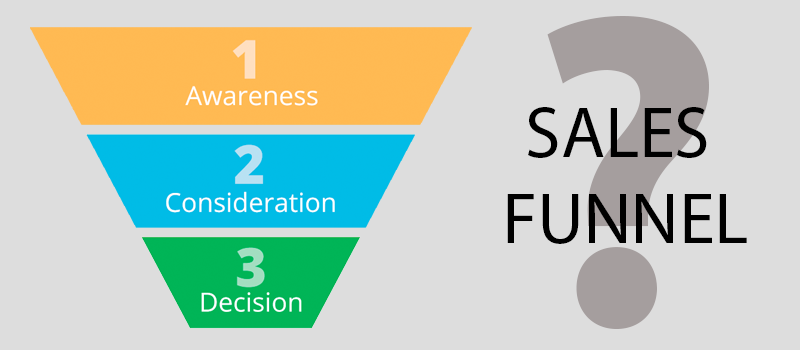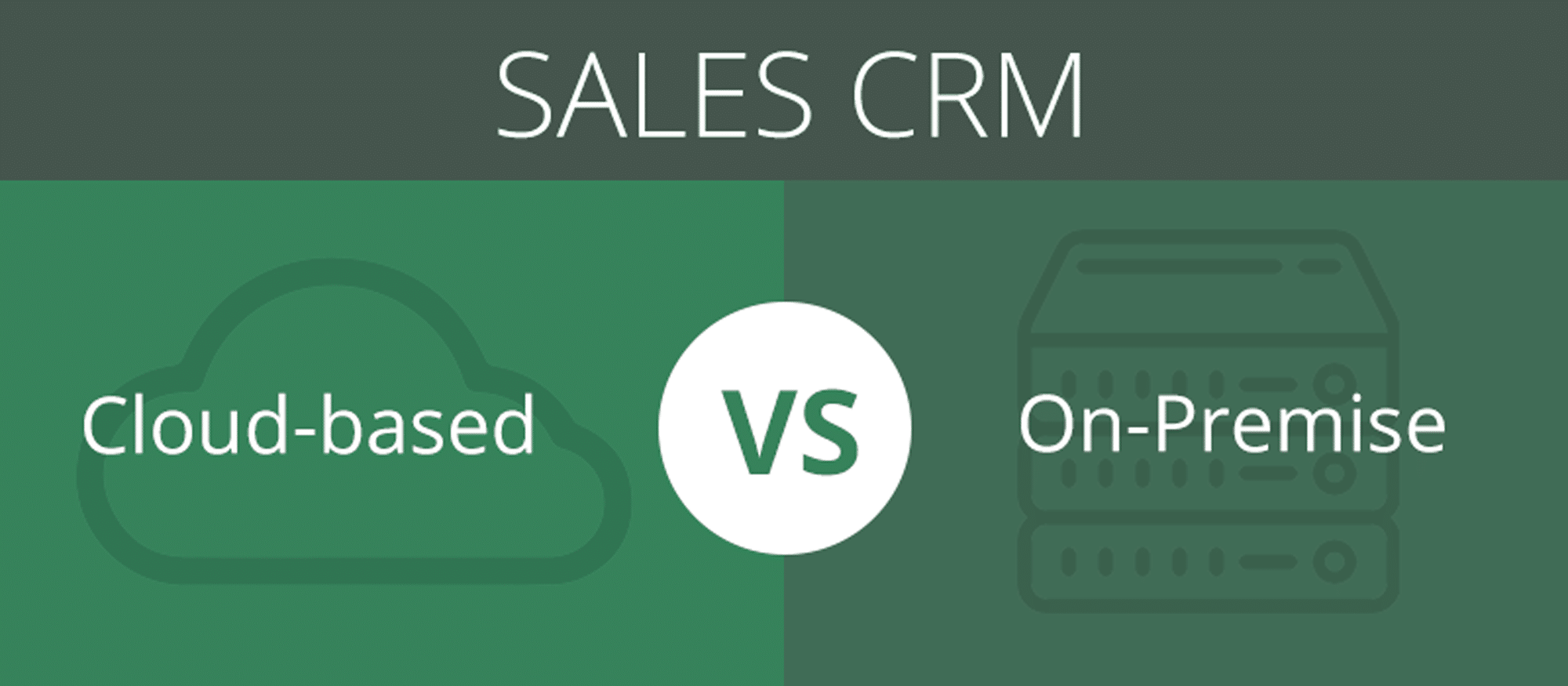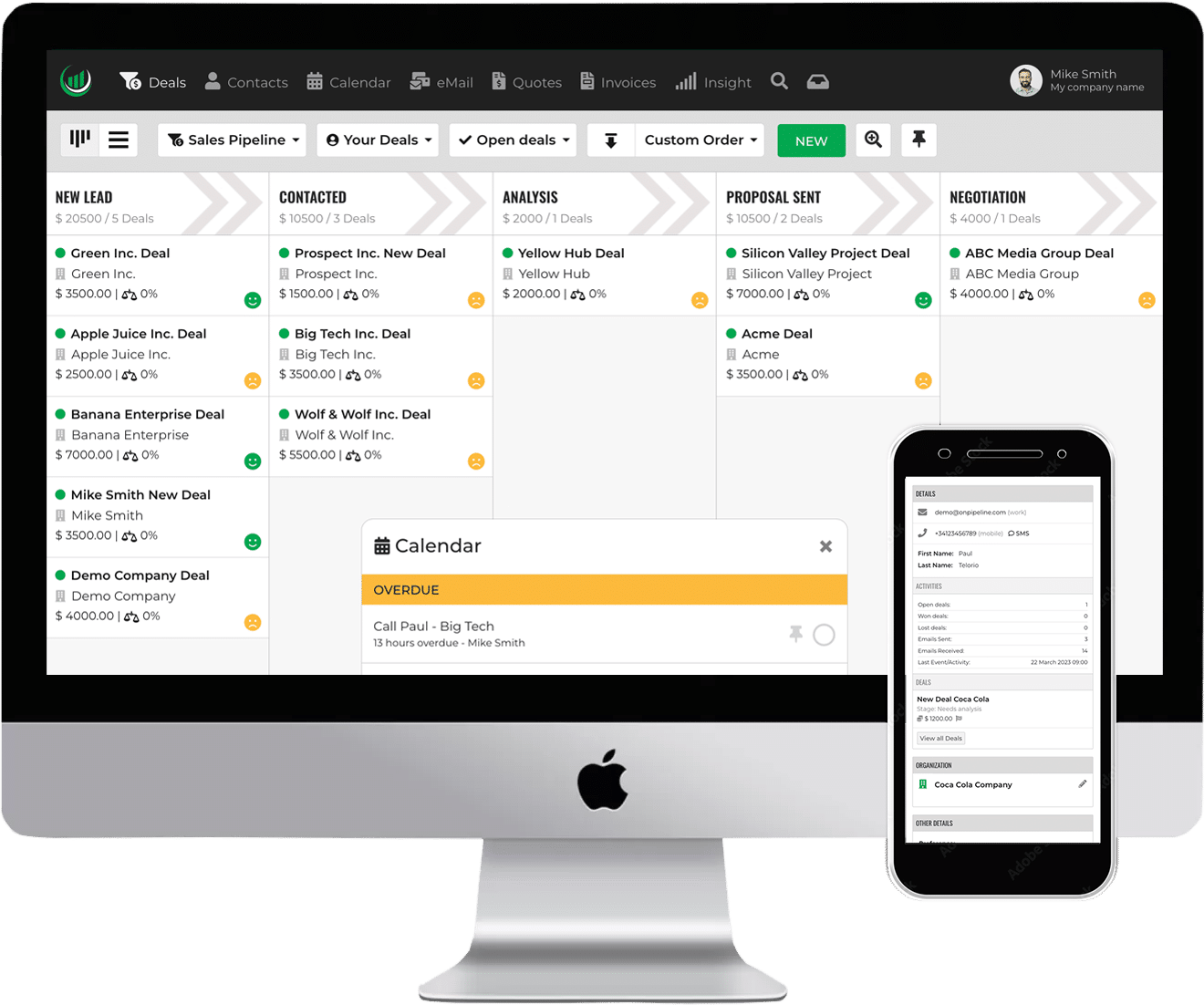About this Guide
Welcome to this awesome guide! It’s like a collection of really helpful tips and tricks. We’ve put together some cool posts from Onpipeline’s Blog, where we like sharing our smart ideas with you. Get ready to explore useful info and practical advice. Everything you’ll see here is because we really want to help you do great in sales and make friends with your customers. And guess what? We’re not stopping – we’re excited to keep adding new free stuff to this guide. We want to make sure you always know the latest things about sales and CRM. So, let’s go on this journey together and make you even better at what you do!
Who is this Guide for?
This guide is here to help both people and businesses who want to learn more about sales strategies and taking care of customers. Whether you own a business and want to make your sales better, work in sales and want to get even better, or just want to know about taking care of customers, this guide is made just for you.
What is Customer Relationships?
Customer relationships are how businesses connect with customers over time. These connections involve interactions and understanding their needs. Trust, communication, and providing value are key to building strong customer relationships. It’s like a bridge that keeps customers happy and coming back.
What does Sales mean?
Sales is when a business talks to people about their products or services and tries to get them to buy. It’s about convincing customers to get something from the business by showing them how it can be helpful or valuable for them. The business and the customer both benefit when a sale happens.
Sales Management: Process, Goals, and Motivation
Making sales work really well is important for businesses to succeed. This is where Sales Management comes in. It means organizing sales tasks and taking care of the sales team so they can make the most money possible.
Sales management is like building a strong structure. It means planning and controlling sales tasks carefully so they fit with what the whole company wants to achieve.
And not just that, managing sales also means making sure the sales team works together smoothly. This helps them become better friends with both current customers and new ones. And when they have good relationships, it’s much more likely that they’ll close deals successfully.
The Sales Manager
The sales manager’s job is really important in all of this. They’re the ones who make things happen by using certain plans. These plans help the team reach the company’s sales goals, and maybe even go beyond them.
Being a good leader to the sales team and making sure they’re excited about their work is crucial. Sales managers can guide their teams to do even better and make more money by doing this in a smart way.
Understanding the Sales Pipeline
A Sales Pipeline is a tool that helps keep track of potential customers as they go through the sales process. This is a big deal in Sales Management, as making the pipeline work better is a top goal for sales teams.
Different Steps (Stages)
The Sales Pipeline has lots of steps, and each one shows where a customer is on their journey to buy something. As customers move through these steps, the sales team takes care of them and guides them along. This helps make closing deals smoother and more organized.
Learning Stuff
The Sales Pipeline isn’t just for watching how individual customers are doing. It also tells us important stuff about how well the whole sales process is going.
When sales teams find places where things slow down and make each step better, they can make more people say “yes” to buying and the company can make more money.
Exploring the Sales Funnel
Think of the sales funnel as a map of how customers go from knowing about something to actually buying it. It’s like a picture that shows how a lot of people interested in something become a smaller group who really want to buy it.
Imagine the funnel like a triangle. At the top, it’s about making people know there’s something cool. Then, as they go down, they start liking it more and thinking about buying it. Finally, they reach the bottom, where they actually buy it.
It’s important to note that while the Sales Pipeline is often confused with the Sales Funnel, they are technically interconnected but serve different purposes. The Sales Funnel focuses on managing leads, while the Sales Pipeline deals with handling deals in progress.
The Limitations of Excel: Embracing CRM Tools
Even though spreadsheets like Excel are used for business tasks, they aren’t great for Sales Management and keeping customers happy. That’s where Customer Relationship Management (CRM) tools come in.
The Complete Picture
Unlike spreadsheets, CRM software gives you a full look at how you’re connected to customers. It keeps all the important stuff like names, interactions, and sales info together.
This makes it easy for sales teams to really know their customers and talk to them in a way they like.
With CRM tools, businesses can make selling smoother, talk better with customers, and get even better results.
Also, CRMs help sales teams understand what customers want and how they act. And when they know this, they can sell better.
Tracking Metrics and KPIs for Success
Checking how well sales are going using CRM metrics and Key Performance Indicators (KPIs) is fundamental. It helps find where things can get better (areas of improvement) and make sales plans work cooler.
When businesses keep an eye on the right numbers and KPIs, they can make smart choices based on data. This makes sales work smoother, and the goal of making more money can happen.
The most important metrics
Some of the key metrics to track include
- conversion rates
- sales velocity
- win rate
- customer acquisition cost
- customer lifetime value
These metrics provide valuable insights into the effectiveness of the sales process, the efficiency of the sales team, and the overall health of the sales pipeline.
Monitoring
By checking these numbers regularly and taking a closer look at them, sales managers can figure out what the team is great at and where they might need some extra support. This way, they can use their resources wisely and give the sales team the right kind of training.
And you know what’s cool? When the team does a good job according to these numbers, it’s like giving them a pat on the back and saying, “You’re awesome!” This can really inspire them to keep aiming for even better results.
Cloud Vs. On-Premise Sales CRM
Choosing the right CRM solution is a critical decision that can significantly impact a sales team’s success.
In Sales Management, businesses have two main options: Cloud-based (Software-as-a-Service) CRM and On-Premise CRM.
1. Cloud-based CRM
Cloud-based CRM is a model where the CRM software is hosted on remote servers and accessed through the internet. It offers several advantages, including easy accessibility from anywhere with an internet connection, automatic software updates, and scalable pricing based on usage.
2. On-Premise CRM
On the other hand, On-Premise CRM is installed and run on the company’s own servers and hardware. This option provides more control over data security and customization but requires ongoing maintenance and dedicated IT resources.
Choosing between these two:
The choice between these two types of CRM largely depends on the business’s specific needs, budget, and IT infrastructure.
For companies looking for flexibility and easy deployment, cloud-based CRM might be the preferred choice, while those with strict data security requirements may opt for an on-premise solution.
Distinguishing Between ERP and CRM
As businesses embark on their digital transformation journey, they may wonder whether they need a CRM or an ERP system or both.
While both systems are essential for optimizing business processes, they serve distinct purposes in Sales Management.
CRM
A CRM (Customer Relationship Management) system is primarily focused on managing customer relationships, from lead generation to post-sale.
It centralizes customer data, interactions, and communication history, enabling sales teams to provide personalized and targeted services.
CRM systems are designed to streamline the sales process, enhance customer engagement, and improve overall customer satisfaction.
ERP
On the other hand, an ERP (Enterprise Resource Planning) system is a comprehensive, organization-wide solution that integrates various business functions and processes, such as finance, human resources, inventory, and procurement.
It provides a holistic view of the company’s operations, streamlining workflows, and improving efficiency across different departments.
While both CRM and ERP systems play crucial roles in Sales Management, they target different aspects of the business.
A CRM system mainly focuses on optimizing the sales process and managing customer relationships, while an ERP system seeks to enhance overall business operations and resource management.
The Art of Nurturing Leads
Nurturing leads is an art that requires finesse and a deep understanding of the buyer’s journey.
In Sales Management, effectively nurturing leads is essential for maximizing the performance of the sales pipeline and driving successful conversions.
One key aspect of lead nurturing is building strong relationships with potential customers.
Personalized Customer Interactions
Personalization is crucial here, as customers expect tailored interactions and solutions that address their specific needs and pain points.
By understanding their preferences and concerns, sales teams can develop trust and rapport with prospects, increasing the chances of successful conversions.
Automation
Leveraging automation is another vital element of lead nurturing. Automation tools can help streamline repetitive tasks, such as email campaigns and follow-ups, ensuring timely and consistent communication with leads.
This approach allows sales teams to focus on building relationships and providing value-added services to potential customers.
Lead scoring
Implementing lead scoring and segmentation is another powerful technique in lead nurturing.
By categorizing leads based on their level of interest and engagement, sales teams can prioritize their efforts and allocate resources more efficiently.
High-scoring leads can receive personalized attention, while those still in the early stages of the buyer’s journey can be nurtured through targeted content and communications.
Channels in Lead Nurturing
Establishing strong communication channels is equally critical in lead nurturing.
Providing various channels for prospects to engage, such as social media, live chat, and phone support, ensures that potential customers can easily reach out with questions or concerns.
Responsiveness and excellent customer service can significantly influence a lead’s decision to move forward in the sales process.
Continuous Analysis and Optimization
Continuous analysis and optimization are the final components of effective lead nurturing in Sales Management.
By regularly reviewing the performance of lead nurturing strategies, sales teams can identify areas for improvement and make data-driven adjustments to enhance their approach continuously.
Avoiding Sales Pipeline Implementation Mistakes
Implementing a sales pipeline and CRM system can indeed be a game-changer for any business, but it is not without its challenges.
In Sales Management, mistakes during the sales pipeline implementation can hinder success and cause frustration among the sales team.
One common mistake is not aligning the sales pipeline with the company’s overall sales strategy and objectives.
A well-designed sales pipeline should mirror the buyer’s journey and take into account the specific needs and preferences of the target audience.
Without proper alignment, the pipeline may not effectively guide leads through the sales process, leading to lower conversion rates.
Training and onboarding for the sales team
Another pitfall is underestimating the importance of sales training. Introducing a new CRM system and sales pipeline requires proper training to ensure that the sales team can fully leverage its features and functionalities.
Inadequate training can lead to confusion, resistance, and reduced productivity.
Maintenance and Upgrades
Additionally, overlooking the need for regular maintenance and updates can impact the system’s performance over time.
In Sales Management, CRM systems need to be maintained and upgraded to stay current with technological advancements and changing business needs.
Neglecting this aspect can result in outdated processes and missed opportunities for improvement.
Integrate the CRM
Furthermore, failing to integrate the CRM system with other existing tools and platforms can create inefficiencies and data silos. Integration with marketing automation software, email platforms, and customer support systems is crucial for seamless data flow and coordinated efforts between different departments.
To avoid these pitfalls, businesses should conduct thorough research and planning before implementing a sales pipeline and CRM system.
Collaborative Adoption
Involving key stakeholders and seeking input from the sales team can ensure that the chosen solution aligns with the organization’s goals and requirements.
Proper training and ongoing support are also essential for successful implementation and adoption among the sales team.
Regular evaluation and updates will help keep the CRM system and sales pipeline optimized and responsive to evolving business needs.
How Many Sales Pipeline Stages?
Determining the ideal number of sales pipeline stages is a crucial decision in Sales Management.
Each stage represents a significant step in the customer’s journey towards making a purchase, and the number of stages can vary depending on the complexity of the sales process and the nature of the business.
Reflect Buyer Progression
In general, a sales pipeline should be designed to mirror the various phases of the buyer’s journey, starting from initial awareness to final conversion.
Common stages include prospecting, qualifying leads, presenting proposals, negotiating deals, and closing sales.
The number of stages should be balanced to avoid unnecessary complexity while providing sufficient granularity to track the progress of prospects through the sales process.
Too few stages can result in insufficient visibility into the sales pipeline, making it challenging to identify potential bottlenecks or areas for improvement.
On the other hand, too many stages can lead to data overload and confusion among the sales team, potentially slowing down the sales process.
The best approach is to align the sales pipeline stages with the specific needs and characteristics of the target audience.
Behavioral Understanding
Understanding customer behavior and preferences can help determine the critical touchpoints in the buyer’s journey and guide the design of an effective sales pipeline.
Companies with a more straightforward sales process or a smaller customer base may opt for a more streamlined sales pipeline with fewer stages.
In contrast, businesses with longer and more complex sales cycles or a diverse range of products and services may benefit from a more detailed and comprehensive pipeline with multiple stages.
Defining the Number of Stages
To determine the ideal number of sales pipeline stages, businesses should consider factors such as the typical customer journey, the complexity of their offerings, the length of the sales cycle, and the resources available for managing the pipeline.
Regularly reviewing and fine-tuning the pipeline based on real-world data and feedback from the sales team can ensure its continuous optimization and effectiveness in Sales Management.
Net Sales vs. Gross Sales
When assessing the success of a business, it’s essential to understand and differentiate between net sales and gross sales.
These two metrics provide valuable insights into a company’s revenue generation and financial performance in Sales Management.
Gross Sales
Gross sales refer to the total revenue generated from all sales transactions before any deductions or adjustments.
It includes the full value of goods sold or services rendered without accounting for factors such as returns, allowances, or discounts. Gross sales offer a broad overview of a company’s sales performance and total revenue generation.
Net Sales
Net sales, on the other hand, represent the actual revenue earned by a business after accounting for returns, allowances, and discounts.
Net sales provide a more accurate reflection of a company’s revenue stream because they subtract the cost of goods sold and other expenses associated with returned or discounted items. As a result, net sales represent the true income generated by the business from sales activities.
Distinction Between Gross Sales and Net Sales in Sales Management
The difference between gross sales and net sales is essential in Sales Management because it impacts the company’s profitability and financial health.
Gross sales can be higher due to large sales volumes, but net sales provide a more accurate picture of how much revenue the company effectively retains after accounting for various adjustments.
By tracking both gross and net sales, businesses can gain insights into their sales performance, identify trends, and assess the effectiveness of their pricing strategies and sales promotions.
A high difference between gross and net sales may indicate potential issues, such as high return rates or excessive discounts, which can impact the company’s profitability and bottom line.
In summary, gross sales provide a comprehensive overview of total sales revenue, while net sales offer a more accurate representation of revenue after accounting for returns and discounts.
Monitoring both metrics is crucial for evaluating the company’s financial performance and making informed decisions in Sales Management.
10 Best Sales Techniques
Closing a deal is the ultimate goal of any sales professional, and mastering the best sales techniques is essential for achieving consistent success in Sales Management.
While there is no one-size-fits-all approach to closing deals, there are several proven techniques that salespeople can utilize to increase their chances of sealing the deal.
1. Build Strong Relationships
Establishing a genuine connection with prospects is crucial in Sales Management. Building trust and rapport with customers can significantly impact their decision-making process and create long-lasting relationships.
2. Active Listening
Listening actively to customer needs and concerns is a fundamental skill in sales. Understanding their requirements allows salespeople to tailor their offerings and pitch to meet those specific needs.
3. Solution-Oriented Selling
Instead of focusing solely on the product or service features, sales professionals should emphasize the value and benefits their offerings bring to the customer. Presenting solutions that address the prospect’s pain points and challenges will resonate more effectively.
4. Overcome Objections
Objections are a natural part of the sales process. Successful salespeople view objections as opportunities to address customer concerns and provide clarity, rather than as roadblocks.
5. Trial Closes
Throughout the sales conversation, using trial closes allows salespeople to gauge the prospect’s interest and readiness to move forward. It also enables them to address any hesitations early on.
6. Negotiation Skills
Skilled negotiation is crucial in closing deals on favorable terms for both parties. Understanding the prospect’s needs and finding mutually beneficial agreements can lead to successful outcomes.
7. Create a Sense of Urgency
Motivating prospects to act quickly is a powerful technique in Sales Management. Offering limited-time promotions or highlighting the benefits of immediate action can prompt customers to make faster decisions.
8. Follow Up
Effective follow-up is vital in maintaining customer engagement and nurturing prospects through the sales process. Consistent communication and timely responses build trust and keep prospects engaged.
9. Handle Rejections Gracefully
Rejections are part of the sales journey. Successful salespeople don’t take rejections personally but use them as opportunities to learn and improve their approach.
10. Always Be Closing
The phrase “always be closing” doesn’t mean being pushy or aggressive. Instead, it emphasizes the importance of consistently moving prospects through the sales process, whether it’s advancing to the next stage or finalizing the deal.
By employing these sales techniques and adapting them to fit specific situations and customers, sales professionals can increase their closing rates and achieve greater success in Sales Management.
Handling most common Sales Objections
As a salesperson, encountering objections from potential customers is a natural part of the sales process. Objections can arise due to various reasons, such as price concerns, uncertainty about the product or service, or hesitation to commit.
In Sales Management, effectively handling objections is crucial for overcoming barriers to the sale and building stronger relationships with customers.
Active Listening
When faced with objections, the first step is to listen actively to the customer’s concerns. Understanding their specific objections and the underlying reasons behind them is essential for providing relevant and helpful responses.
Empathize
Showing empathy towards the prospect’s concerns can help in Sales Management. Acknowledging their feelings and validating their perspective can create a sense of trust and openness.
Clarify and Address
Once the objection is raised, clarify any misunderstandings and address the customer’s concerns directly. Providing clear and concise explanations can ease their doubts and build confidence in the product or service.
Offer Solutions
In Sales Management, offering solutions to the customer’s objections is a key strategy. Highlighting the benefits and value of the product or service can demonstrate how it addresses the prospect’s specific needs and concerns.
Social Proof
Sharing testimonials, case studies, or success stories from satisfied customers can provide social proof of the product’s effectiveness and help alleviate doubts.
Handle Price Objections
Price objections are common in Sales Management. In such cases, salespeople can emphasize the product’s value and ROI (Return on Investment) to justify the price or offer special promotions and discounts if appropriate.
Offer Trials or Demonstrations
Providing prospects with the opportunity to try the product or service through free trials or demonstrations can help alleviate their concerns and build confidence in its capabilities.
Seek Commitment
In some cases, prospects may raise objections as a natural part of the decision-making process. In such situations, salespeople can gently seek commitment by asking for the next steps or confirming their interest in moving forward.
Follow-Up!
In Sales Management, following up after addressing objections is crucial. Providing additional information or answering any further questions can reinforce the prospect’s confidence in their decision.
Persistence with Respect
Sales professionals should be persistent in handling objections, but always with respect for the prospect’s decision. If the prospect remains uninterested, it’s essential to gracefully accept their decision while leaving the door open for future opportunities.
By proactively addressing objections and providing satisfactory solutions, salespeople can build trust and credibility with prospects, increasing the likelihood of successful conversions in Sales Management.
Creating an effective Commission Plan
A well-designed commission plan is paramount to motivate and incentivize sales teams for peak performance. In Sales Management, a commission structure plays a significant role in appreciating the hard work of sales reps and driving revenue growth.
A successful commission plan is based on a clear and transparent formula that aligns with the company’s goals and sales objectives. It should be designed to reward individual achievements while encouraging collaboration and teamwork among the sales force.
Several key components contribute to an effective commission plan:
1. Clear Objectives
The commission plan should clearly outline the objectives and targets that sales reps need to achieve to earn their commissions. These objectives should be challenging yet attainable, inspiring salespeople to strive for excellence.
2. Variable Compensation
In Sales Management, the commission plan should incorporate variable compensation based on sales performance. This means that as sales reps surpass their targets, they earn higher commissions, providing a direct correlation between effort and reward.
3. Tiered Structure
A tiered commission structure can be beneficial in providing increasing rewards as sales reps achieve higher levels of performance. This can create a sense of progression and encourage continuous improvement.
4. Timely Payments
Ensuring that commission payments are made promptly is essential for boosting motivation and maintaining sales team morale. Sales reps should receive their earned commissions in a timely and accurate manner.
5. Transparency and Clarity
The commission plan should be transparent, clearly explaining how commissions are calculated and earned. Clarity prevents misunderstandings and ensures that sales reps have a clear understanding of how their efforts contribute to their compensation.
6. Fairness and Equity
In Sales Management, the commission plan should be fair and equitable, treating all sales reps consistently. Avoiding favoritism and providing equal opportunities for all team members promotes a positive and collaborative sales culture.
7. Performance Evaluation
Regularly evaluating sales performance and providing feedback to the sales team is vital in motivating continuous improvement. The commission plan can be adjusted based on sales trends and individual achievements.
8. Incentives for Teamwork
To foster a collaborative environment, the commission plan can include incentives for teamwork and cross-selling. This encourages sales reps to support each other and work together towards shared goals.
9. Continuous Improvement
The commission plan should be reviewed and refined periodically to ensure its effectiveness in Sales Management. Adjustments may be necessary to align the plan with changing business objectives or market conditions.
10. Recognition and Rewards
Recognizing top-performing sales reps and celebrating their achievements can boost team morale and inspire others to excel. Publicly acknowledging outstanding performance creates a positive and competitive sales culture.
By developing a commission plan that is fair, transparent, and closely tied to sales performance, businesses can motivate their sales teams to excel, driving revenue growth and success in Sales Management.
The Power of Customer Profiling
Customer profiling is a powerful tool that businesses can utilize to level up their sales efforts in Sales Management.
Customer profiling involves creating detailed and comprehensive profiles of the target audience based on various characteristics and data points.
Understanding the specific needs, preferences, and behaviors of the target audience is crucial in Sales Management. Customer profiling allows businesses to identify their ideal customers, segment the market effectively, and tailor their marketing and sales strategies accordingly.
Customer profiling involves gathering and analyzing data related to demographics, purchasing behavior, interests, preferences, and pain points.
This information is then used to create detailed customer personas, which represent different segments of the target audience.
With customer profiling, businesses can achieve several benefits:
1. Precise Targeting
Customer profiling enables businesses to identify the most relevant and valuable prospects. By focusing on specific customer segments, sales teams can personalize their approach and deliver targeted messages that resonate with the audience.
2. Personalized Interactions
Understanding customer preferences and pain points allows sales reps to provide more personalized and relevant interactions. Personalization enhances customer experience, fostering stronger relationships and increasing the likelihood of successful conversions.
3. Improved Product Development
Customer profiling provides insights into the features and solutions that customers value the most. This information can be used to refine existing products or develop new offerings that better align with customer needs.
4. Better Marketing Strategies
In Sales Management, customer profiling informs marketing strategies and messaging. Tailoring marketing campaigns to resonate with specific customer segments can lead to higher engagement and response rates.
5. Competitive Advantage
Businesses that effectively utilize customer profiling gain a competitive edge. By understanding their customers better than their competitors, they can position themselves as the preferred choice for their target audience.
6. Customer Retention
Knowing what matters most to customers enables businesses to provide ongoing value and support. Satisfied customers are more likely to remain loyal and recommend the company to others, contributing to long-term growth.
7. Strategic Decision-Making
Customer profiling provides valuable data for strategic decision-making. From product development to market expansion, businesses can base their decisions on concrete insights into customer needs and preferences.
8. Enhanced Customer Satisfaction
Personalized interactions and tailored offerings lead to higher customer satisfaction. Satisfied customers are more likely to become brand advocates, promoting the business through word-of-mouth and social media.
9. Reduced Marketing Costs
Customer profiling ensures that marketing efforts are directed towards the most relevant prospects, reducing wasteful spending on ineffective campaigns. This leads to a more efficient use of marketing resources.
10. Continual Optimization
Customer profiling is an ongoing process that requires regular updates and refinement. As customer preferences evolve, businesses can adapt their strategies to stay in tune with the changing needs of their target audience.
By leveraging the power of customer profiling in Sales Management, businesses can gain deeper insights into their customers and enhance their overall sales and marketing strategies, ultimately driving success and growth.
Understanding Customer Behavior Analysis
In Sales Management, understanding customer behavior is key to predicting their preferences and actions. Customer behavior analysis is a process that involves collecting and analyzing data to gain insights into customer buying habits, interactions, and decision-making factors.
Customer behavior analysis encompasses several essential elements:
1. Buying Habits
By studying customer buying habits, businesses can identify patterns and trends in purchasing behavior. This information allows sales teams to target customers at the right time with the right offers.
2. Frequency Patterns
Understanding how often customers make purchases can help sales teams create targeted marketing campaigns and loyalty programs to encourage repeat business.
3. Purchase Channels
Analyzing the channels through which customers make purchases (e.g., online, in-store, mobile) helps businesses optimize their sales strategies and customer touchpoints.
4. Decision-Making Factors
Knowing the factors that influence customer purchase decisions helps businesses refine their sales messaging and product offerings to align with customer preferences.
5. Customer Segmentation
Customer behavior analysis enables businesses to segment their customer base based on shared characteristics and behaviors. This segmentation allows for more personalized marketing and sales approaches.
6. Customer Lifetime Value
Calculating customer lifetime value helps businesses identify high-value customers and prioritize their efforts to retain and nurture these relationships.
7. Engagement Levels
Monitoring customer engagement levels helps businesses assess customer satisfaction and identify potential opportunities for upselling and cross-selling.
8. Feedback and Reviews
Analyzing customer feedback and reviews provides valuable insights into customer satisfaction and areas for improvement.
9. Abandonment Analysis
Studying cart abandonment rates in e-commerce or churn rates in subscription-based models allows businesses to identify pain points in the customer journey and address them effectively.
10. Predictive Analytics
Utilizing predictive analytics in customer behavior analysis can help businesses forecast future customer actions and optimize sales strategies proactively.
The insights gained from customer behavior analysis in Sales Management allow businesses to make data-driven decisions, optimize their sales and marketing efforts, and create better customer experiences.
By understanding customers’ preferences and anticipating their needs, businesses can deliver targeted offerings, build stronger relationships, and drive higher conversion rates.
Improving Customer Retention with CRM
In Sales Management, customer retention is just as important as acquiring new customers. A solid customer retention strategy is essential for fostering loyalty, increasing customer lifetime value, and driving sustainable business growth.
CRM (Customer Relationship Management) plays a crucial role in improving customer retention. By leveraging CRM tools effectively, businesses can build stronger relationships with existing customers and provide personalized experiences that enhance customer satisfaction and loyalty.
Here are some strategies for improving customer retention with CRM:
1. Personalization
CRMs enable businesses to store and access detailed customer information. Leveraging this data, sales teams can personalize interactions and offers based on individual customer preferences, buying history, and behavior.
2. Tailored Communication
A CRM tool facilitates personalized communication with customers through targeted email campaigns, SMS notifications, or phone calls. This allows businesses to engage with customers on a more personal level and foster a sense of connection.
3. Proactive Customer Support
CRM helps sales teams monitor customer support interactions and respond to inquiries promptly. Proactive support demonstrates a commitment to customer satisfaction, encouraging loyalty.
4. Post-Sale Follow-Up
CRM enables automated follow-up messages after a sale, showing appreciation for the customer’s business and offering assistance if needed. Regular post-sale communication maintains engagement and builds a sense of trust.
5. Loyalty Programs
CRM systems can track customer purchase history and identify loyal customers. This data can be used to create exclusive loyalty programs that offer rewards, discounts, or special perks to valued customers.
6. Customer Feedback Management
CRMs can be used to collect and analyze customer feedback, enabling businesses to identify areas for improvement and address issues proactively.
7. Customer Retention Campaigns
Customer Relationship Management allows businesses to design and execute targeted customer retention campaigns based on specific customer segments and behaviors.
8. Churn Analysis
CRM can be utilized to identify customers at risk of churning (discontinuing their business) based on behavior patterns. This enables sales teams to take preemptive action and offer solutions to retain those customers.
9. Upselling and Cross-Selling
A CRM helps identify upselling and cross-selling opportunities by analyzing customer data and past purchase behavior. Offering relevant add-ons or upgrades can increase customer value and retention.
10. Customer Feedback Loop
CRM facilitates an ongoing feedback loop with customers, allowing businesses to continuously improve their products, services, and customer experiences.
By leveraging CRM to improve customer retention, businesses can create loyal, satisfied customers who contribute to long-term revenue growth and act as brand ambassadors, driving new business through referrals and positive word-of-mouth.
The Importance of Sales Analysis
Sales analysis is a critical component of Sales Management that enables businesses to evaluate their sales performance, identify opportunities for improvement, and make data-driven decisions to optimize their sales strategies.
Sales analysis involves extracting and analyzing data related to sales performance, customer behavior, market trends, and revenue generation. By examining this data, businesses can gain insights into various aspects of their sales process:
1. Product Performance
Sales analysis helps businesses understand which products or services are driving the most revenue and profitability. This information can guide inventory management and inform product development strategies.
2. Sales Rep Performance
Analyzing sales data allows businesses to assess the performance of individual sales reps and identify top performers. This data can be used to provide targeted training and coaching to improve overall sales team performance.
3. Customer Segmentation
Sales analysis enables businesses to segment their customer base based on purchasing behavior, demographics, and preferences. This segmentation helps tailor marketing and sales efforts to different customer segments effectively.
4. Lead Generation Effectiveness
By tracking the sources of leads and their conversion rates, businesses can determine which marketing channels and campaigns are most successful in generating quality leads.
5. Sales Funnel Efficiency
Analyzing the sales funnel helps businesses identify bottlenecks and areas of improvement in the sales process. This analysis can lead to streamlining the sales process and increasing conversion rates.
6. Sales Forecasting
Sales analysis provides historical sales data that can be used to forecast future sales trends and plan for future business needs.
7. Market Opportunities
Analyzing sales data in the context of market trends and competitor performance helps businesses identify new market opportunities and stay ahead of industry developments.
8. Customer Satisfaction
Sales analysis can include customer feedback and satisfaction data, providing insights into customer sentiment and areas for improvement.
9. Sales Rep Workload
Understanding sales rep workloads and performance can help businesses allocate resources more effectively and identify areas where additional support may be needed.
10. Return on Investment (ROI)
By analyzing sales data in relation to marketing and advertising expenses, businesses can calculate the ROI of their marketing efforts and make informed decisions on budget allocation.
In Sales Management, regular sales analysis is essential for optimizing sales strategies, improving customer experiences, and driving overall business growth.
The data-driven insights gained from sales analysis empower businesses to make informed decisions, allocate resources effectively, and stay competitive in a dynamic market environment.
Sales Automation in CRM
Sales automation is a game-changer in Sales Management, streamlining repetitive tasks and enhancing the efficiency of sales teams.
When integrated into CRM systems, sales automation offers a wide range of benefits for businesses seeking to optimize their sales processes.
Sales automation in CRM involves using technology and software to automate various tasks and workflows in the sales cycle. Some key features of sales automation in CRM include:
1. Lead Management
CRM sales automation enables businesses to capture, categorize, and assign leads automatically. This streamlines lead management, ensuring timely follow-ups and preventing potential leads from falling through the cracks.
2. Email Automation
CRM systems with sales automation can automate personalized email campaigns, including welcome emails, follow-ups, and triggered messages based on customer behavior. Automated emails save time and ensure consistent communication with prospects and customers.
3. Sales Reporting
Sales automation in CRM generates real-time sales reports, dashboards, and analytics. This provides sales teams and managers with valuable insights into sales performance and helps identify trends and areas for improvement.
4. Task Management
Automation tools can assign and prioritize tasks for sales reps automatically, ensuring they focus on high-priority activities and meet deadlines.
5. Proposal and Contract Generation
CRM sales automation simplifies the creation of sales proposals and contracts, enabling sales reps to generate customized documents quickly and accurately.
6. Sales Forecasting
By automating the collection and analysis of sales data, CRM systems can generate accurate sales forecasts, allowing businesses to plan and allocate resources effectively.
7. Order Processing
Sales automation streamlines order processing, from order entry to fulfillment, reducing errors and improving order accuracy.
8. Customer Engagement
CRM sales automation allows businesses to automate customer engagement through personalized messaging, customer follow-ups, and automated reminders.
9. Lead Scoring
Lead scoring in CRM systems helps prioritize leads based on their level of interest and engagement, ensuring sales reps focus on the most promising opportunities.
10. Sales Funnel Management
Sales automation in CRM provides real-time visibility into the sales pipeline, making it easier for sales managers to track progress, identify potential bottlenecks, and allocate resources strategically.
By implementing sales automation in CRM, businesses can increase sales team productivity, improve customer engagement, and enhance the overall efficiency of their sales processes.
Sales automation enables sales teams to focus on high-value tasks, build stronger relationships with customers, and drive more revenue with fewer manual efforts.
Essential CRM Features for Sales
In today’s competitive business landscape, effectively managing customer relationships is crucial for success. Customer Relationship Management (CRM) software offers a range of features that can help businesses optimize their sales efforts and deliver exceptional customer experiences.
Here are some essential CRM features that can improve sales and optimize business operations:
1. Contact Management
CRM’s contact management feature allows businesses to organize and store customer information, including contact details, interaction history, and preferences. Having a centralized database of contacts streamlines communication and helps sales reps personalize interactions.
2. Sales Pipeline and Deal Management
CRM provides deal management and a visual representation of the sales pipeline, allowing sales teams to track and manage deals at various stages of the sales process. This feature ensures that no opportunity is overlooked, and sales reps can prioritize their efforts effectively.
3. Activity Tracking
CRM’s activity tracking feature allows businesses to record and monitor sales activities, such as calls, emails, and meetings. This data provides valuable insights into the sales team’s performance and helps identify areas for improvement.
4. Reporting and Analytics
CRM systems offer robust reporting and analytics tools that generate real-time insights into sales performance, customer behavior, and revenue generation. These reports help sales managers make data-driven decisions and optimize sales strategies.
5. Customer Support Integration
Integrating customer support features into CRM enables seamless communication between sales and support teams. This ensures a unified approach to customer interactions and provides a comprehensive view of customer interactions across all touchpoints.
6. Sales Forecasting
CRM’s sales forecasting feature uses historical sales data and trends to predict future revenue and sales outcomes. Accurate sales forecasts help businesses plan resources and set realistic revenue targets.
7. Email Integration
CRM’s email integration allows sales reps to manage emails within the CRM system, saving time and ensuring that all communication with customers is centrally stored and accessible.
8. Mobile Accessibility
Mobile CRM applications enable sales reps to access customer information and manage tasks on the go, enhancing productivity and responsiveness.
9. Lead Management
CRM’s lead management feature automates lead capture, scoring, and assignment. This helps sales teams prioritize leads and ensures timely follow-ups to maximize conversion rates.
10. Sales Performance Gamification
Some CRM systems incorporate gamification elements to motivate sales reps and drive healthy competition among team members. Leaderboards, badges, and rewards can boost team morale and productivity.
By leveraging these essential CRM features, businesses can optimize their sales processes, enhance customer relationships, and achieve greater success in Sales Management.
Implementing a CRM system tailored to the company’s needs can significantly impact sales efficiency, team collaboration, and overall revenue growth.






















